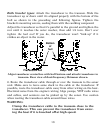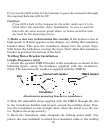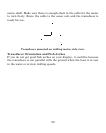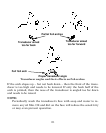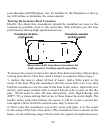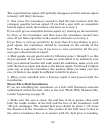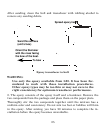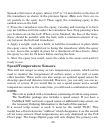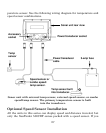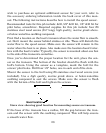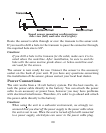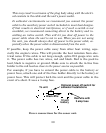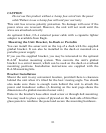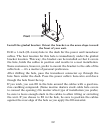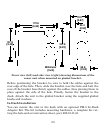26
Spread a thin layer of epoxy (about 1/16" or 1.5 mm thick) on the face of
the transducer as shown in the previous figure. Make sure there are no
air pockets in the epoxy layer! Then, apply the remaining epoxy to the
sanded area on the hull.
3. Press the transducer into the epoxy, twisting and turning it to force
any air bubbles out from under the transducer face. Stop pressing when
you bottom out on the hull. When you're finished, the face of the trans-
ducer should be parallel with the hull, with a minimum amount of ep-
oxy between the hull and transducer.
4. Apply a weight, such as a brick, to hold the transducer in place while
the epoxy cures. Be careful not to bump the transducer while the epoxy
is wet. Leave the weight in place for a minimum of three hours. Allow
the epoxy to cure for 24 hours before moving the boat.
5. After the epoxy has cured, route the cable to the sonar unit and it's
ready to use.
Speed/Temperature Sensors
This unit can accept as many as two temperature sensors, which can be
used to monitor the temperature of surface water, a live well or some
other location. These units can also accept an optional speed sensor for
showing speed and distance traveled. However, you can only use one ac-
cessory at a time. If you would like to use a speed sensor and a second
temperature sensor at the same time, you will need a combination device.
NOTE:
This unit is packed with a transducer containing a built-in temp sensor.
The SeaFinder package also includes a speed sensor. If you have a
FishMark 500C and want a speed sensor or additional temp sensor, see
the Accessory Ordering Information in the back of this manual.
If a second temp sensor is used, it must be the model TS-2U. This
model has a fixed electronic "address" which designates it as the second
of two temp sensors. Dual temperatures are only displayed on the Full
Chart page. The Large Digital page will only display the primary tem-



